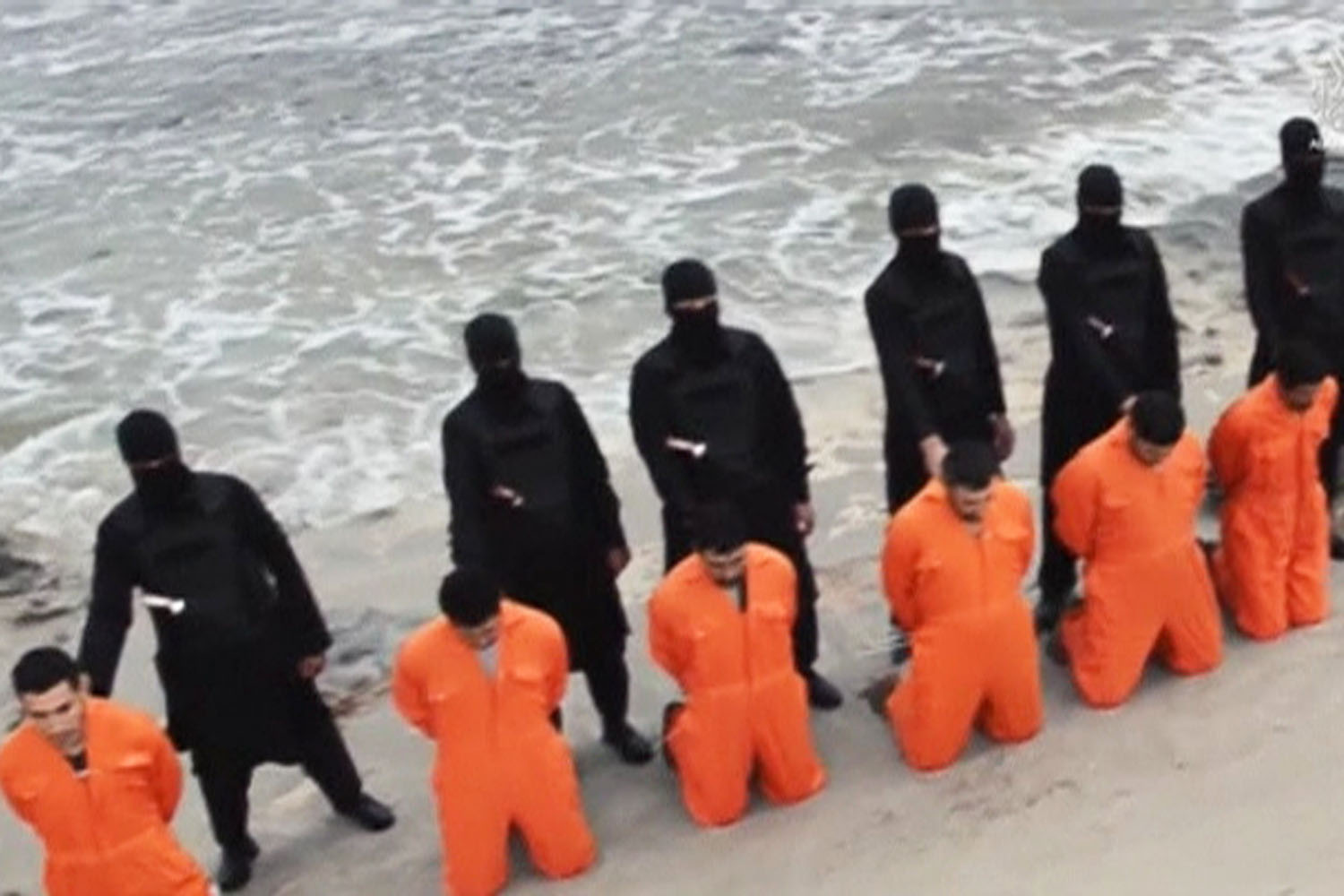“I was saying it the other day—’cause we’re doing a tremendous amount of work in space—I said, maybe we need a new force. We’ll call it the space force,” remarked U.S. President Donald Trump at a speech in early 2018. “And I was not really serious. And then I said, what a great idea. Maybe we’ll have to do that.”
The reaction to President Trump’s remarks were swift.
‘President Trump proposes new military branch’ was immediately sprawled across major news outlets as political pundits argued whether or not this was a legitimate idea. Within hours #USSpaceForce was trending on Twitter as millions wondered if this was the beginning of some sort of ‘star wars’ or another flippant, off-the-script moment.

However, the idea of creating a new, independent “space force” and/or “space command” in the U.S. was anything but new. In fact, this had been a decades-long debate, as Dr. Cassandra Steer, former executive director of the McGill Centre for Research in Air and Space Law, and a consultant with Space Strategies Consulting Ltd; and Kiernan McClelland, PhD candidate at Carleton University, and policy analyst at Space Strategies Consulting Ltd, wrote last year:
“President Trump did not come up with this idea himself: the role of an independent space force has been debated in Congress for the past two decades. Already in 1997, U.S. Air Force Chief of Staff Ron Fogleman outlined a vision to “transition from an air force to an air and space force,” but it has taken until now for the vision to gain traction.”
Before President Trump’s remarks, the U.S. House of Representatives passed a bi-partisan legislation in July 2017 that would “build a new ‘space corps’ within the Air Force.” Ironically, the Pentagon opposed the legislation. Fast-forward to 2020, and the U.S. Space Force is no longer just a fantastical idea—it’s happened, and the move has caused a simmering debate up north: Does Canada need a space force?
A Canadian Space Force? The debate
According to Dr. Steer and McClelland, Canada does need a space force, because:
- Canada is dependent on satellites, and therefore we should put “human and financial resources” to ensure their security
- A space force would “solve the problem that space expertise is scattered across the services and intelligence agencies”
- A national space force would “increase the efficiency of military space operations” and would play a key role in a “more coordinated approach” to national space security activities
It’s important to point out that the Canadian Air Force (CAF) already engages in space activities, led by Brigadier General Kevin Whale, Director General and Component Commander of Space. The mission of which is to “to maintain space domain awareness, and to develop, deliver and assure space-based capabilities.” Perhaps, for that reason, some Canadian defense experts and former military personnel rejected the idea of a Canadian space force, at least for now. Tom Lawson, Canada’s former chief of defense staff for the Canadian Armed Forces and deputy commander for NORAD, initially dismissed the creation of a Canadian space force counterpart without more details about what the U.S. Space Force would look like and how it would impact Canada’s strategic partnerships and military agreements with the US and other allies (e.g. NORAD, Space Situational Awareness agreement, etc.). Matthew Overton, former executive director of the Conference of Defence Associations Institute, told the CBC, “At some point we might like to think about a space force,” but first we need to create a “centre of excellence on space knowledge.” However, as the U.S. Space Force takes shape (it just released its first recruiting video), sentiments may begin to change here in Canada.
One thing that most parties appear to agree on is that even if Canada wanted to create a space force in the near future, it needs a coordinated national policy and strategy. In March 2019, the Minister of Innovation, Science and Economic Development Canada released the “Exploration, Imagination, Innovation: A New Space Strategy for Canada.” The focus is to, “leverage Canadian strengths like robotics, while advancing science and innovation in exciting areas like AI and biomedical technologies.” However, there’s a noticeable lack of focus on space security issues, such as the increasing weaponization of space or space debris that threatens critical satellites. According to Dr. Steer, this 2019 strategy leaves a lot to be desired, “Space security is an important piece of the puzzle, and is largely ignored in the strategy. We are so dependent on space technologies for our daily activities—think TV, telecommunications, GPS, international banking—that we need to protect them from existing threats such as cyber attacks, and from future threats.” There’s something else missing in the strategy, however, a clear commitment by the Canadian government to develop “international norms of responsible behaviour in space.”
Space has always been militarized, but it doesn’t need to be weaponized
It’s a little known fact that before the U.S. National Aeronautics and Space Administration (NASA) was created in 1958, the Advanced Research Projects Agency (later, DARPA) was created just months beforehand as a direct reaction to the Soviet Union’s launch of Sputnick, the first “artificial satellite,” at the height of the Cold War. Although its mission and focus quickly shifted from space in the early 1960s, ARPA did help develop Transit, the precursor to the satellite-based global positioning system (GPS) that we all use today. This dual-use technology, meaning it’s used by both civilians and the military, is a prime example of the ever-present “militarization” of space. As Ram S. Jakhu, director of the Institute of Air and Space Law at McGill University, explained in 2016, “It is now clear that space has been used for military activities almost from the start of the space age. Some of this may be termed passive military activities in outer space. This includes the provision of supporting communications, imaging and location assistance through satellite technology.”
What worries space lawyers like Dr. Jakhu, however, is the increasing “weaponization” of space. “Many countries are now increasingly using space technology as part of active engagement in the conduct of armed conflict on land, at sea and in the air in the terrestrial context,” he explained, “…All major space powers are working to develop space-based weapons systems and many now suggest that a war in space is inevitable.”
In 2007, the Chinese government conducted its first known test of an anti-satellite weapon (ASAT)—destroying a defunct weather satellite and creating over 600 millions of pieces of space debris. NASA’s Nicholas Johnson, Chief Scientist for Orbital Debris at Johnson Space Center said at the time, “Any of these debris has the potential for seriously disrupting or terminating the mission of operational spacecraft in low Earth orbit…This satellite breakup represents the most prolific and serious fragmentation in the course of 50 years of space operations.”
It wasn’t just the resulting space debris that posed a danger, however. This was the first known “successful satellite intercept test since 1985” and thus indicated that ASATs are now viable technology for more countries. Since 2007, the U.S., Russia, and India have all obtained and/or demonstrated their own ASATs. Although these weapons have yet to be used in warfare, it’s safe to say the race to weaponize space is ongoing, despite the efforts by many to incorporate the “peaceful purposes” principle into any space activity. This was outlined initially in the Outer Space Treaty of 1967, which stated, “the common interest of all mankind in the progress of the exploration and use of outer space for peaceful purposes.” The Treaty enshrined the idea that outer space was the “province of all mankind” through a set of principles, one of which was intended to maintain peace and security in outer space by preventing the weaponization of space. Four other United Nations (UN) treaties followed soon after, dealing with a range of issues related to space activities, including “arms control.” Since the 1980s, the UN has also regularly passed a resolution on the Prevention of an Arms Race in Outer Space.
Unfortunately, these international agreements have failed to fully stop the weaponization of space, due, in part, to the reluctance of international powers to adhere to strict guidelines or comprehensive norms. Making matters worse, most international laws and/or norms regarding warfare on Earth effectively fail to set rules for warfare in outer space and/or on celestial bodies (e.g. the Moon). This led Dr. Jakhu and his colleagues to launch the Manual on International Law Applicable to Military Use in Outer Space (MILAMOS) project in 2016.
Filling the void: Canada’s opportunity
So where does Canada stand? “Other nations still see Canada as a credible, peaceful international player, and we have been active in space since the beginning,” Dr. Steer explained in 2019. In fact, Canada was one of the key voices formulating the 1967 Outer Space Treaty and has been a signatory on other international agreements. Unfortunately, the principles outlined in these agreements are increasingly under strain by the actions of space-faring nations, such as the U.S. and China, and there is a significant gap in leadership. Dr. Steer and others argue Canada has a unique opportunity to take a lead internationally on developing norms for space activities, particularly in regards to warfare—promoting the “peaceful purposes” principle as much as possible. However, Canada must develop its own coordinated national approach to space first, and the latest space strategy misses the mark by failing to mention the significant issues facing outer space today and failing to clearly affirm the core principles outlined in the aforementioned international agreements. Jessica West, senior researcher at Project Ploughshares, wrote about the strategy:
“A national strategy should articulate not only a plan to utilize and benefit from space, but also the fundamental values and vision that will guide our actions and interactions—and those of our citizens and industry—in this global community. At a minimum, the strategy should reinforce Canada’s commitment to the core principles of the Outer Space Treaty, including peaceful use and universal benefit.”
On May 27, for the first time since 2011, the U.S. will launch American astronauts from American soil on an American rocket, thanks to private company SpaceX. Dubbing the mission, “Launch America,” NASA claims it will mark “a new era of human spaceflight” as the U.S. looks to return to the Moon in just a few years, and eventually, to Mars. A new “space race” is revving up, this time with perhaps even more tension and uncertainty between quarrelling nations. The question is: Where is Canada? Before asking whether or not Canada needs a space force akin to the U.S., we need to define the role Canada will play in the increasingly militarized and weaponized realm of outer space. What should Canada’s space policies be? What norms should it support in regards to space warfare? These are questions Canada needs to address, ideally through a comprehensive national policy for outer space that takes into account the increasing militarization and weaponization of space, and clarifies its position on these issues with a strong and unified voice.
Photo: President Donald Trump signing the 2020 National Defense Authorization Act, by The White House via Wikimedia Commons. Public Domain.
Photo: Cover of Exploration Imagination Innovation, by the Government of Canada via https://www.asc-csa.gc.ca/pdf/eng/publications/space-strategy-for-canada.pdf.
Photo: Launch of SM-3 to destroy the NRO-L 21 satellite, via Wikimedia Commons. Public Domain.
Disclaimer: Any views or opinions expressed in articles are solely those of the authors and do not necessarily represent the views of the NATO Association of Canada.



